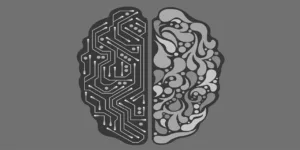What is AIOps?
As you can probably guess from the name, AIOps is what happens when you put AI and DevOps together. DevOps is the idea that IT and development departments should be integrated and automated. Essentially, IT builds a pipeline that includes environments, automated testing, and release. This leaves developers free to simply write code and support their application. The pipeline handles many if not most aspects of putting new code into production.
AIOps goes an extra step further. Instead of simply adding automation, AIOps provides smart instrumentation. Throughout the development pipeline and product lifecycle, AIOps tools can intelligently detect issues and correlate them with failures in hardware and software infrastructure. This lets DevOps staff mitigate unplanned downtime or bottlenecks in production in just minutes.
Many decision-makers and IT leaders are probably asking themselves why they would consider moving from DevOps to AIOps, especially if they just moved to DevOps a few years ago. There are a few good reasons for this.
First, many people think of DevOps as new, but it started gaining traction in 2009. The 10-year-old vision of DevOps doesn’t take the possibilities of AI into account, because AI as we know it wasn’t around yet. If you don’t update your implementation of DevOps to take these possibilities into account, you’ll be surpassed by those that do.
Second, a primary complaint with DevOps is that it adds many new responsibilities to an already-complex task. In addition to maintaining a company’s existing store of apps and infrastructure, they have to create and keep up a production toolchain, create new cloud implementations on demand and keep it all available. Adding AI to the pipeline helps make the workload more equal, in turn making DevOps staff faster and more efficient.
How (and How Often) are Companies Using AIOps
Gartner predicts that one-third of enterprises will be using AIOps by 2023. Since AIOps is a newer concept, however, and since it has many applications, it’s hard to know what the adoption level is right now (Gartner puts their estimate at five percent). It’s likely that many companies have “adopted” AIOps by incorporating AI tools into DevOps workflows without formally restructuring their organizations.
These companies will end up using AIOps in a variety of ways.
Enhance Automation
Existing tools in the production pipeline have embraced automation, but they’re not necessarily smart about it. For example, you might be able to set an automated ETL tool, but that tool lacks awareness. If an error in the data leads to garbled output, it’s just going to keep running, and ruining the entire batch.
On the other hand, AIOps tools have the capability to instrument these applications. If an automated process starts to show signs of error, it may have the ability to stop the process and alert on the error type – saving hours of wasted effort.
Correct Inefficiencies
DevOps teams commonly deploy their applications in novel ways – in containers, as a microservices architecture, in Kubernetes pods, etc. These methods provide flexible, scalable and fault-tolerant applications – when they’re configured and administered correctly.
As it turns out, these new architectures can fail dramatically if they’re not monitored. Since these applications tend to be spread out into many small nodes, monitoring them is often easier said than done. AIOps tools, however, are capable of monitoring containers, microservices, and K8s pods at a more granular level, helping to prevent outages.
Fine-Tune the User Experience
Unexpected application slowdowns, outages, or price glitches can irk customers and slow down productivity. Unfortunately, enterprises run an average of 464 applications and can serve millions of customers and thousands of users. As a result it’s possible to miss these annoyances for hours or even days.
AIOps is an instrumental component of Application Performance Management (APM). It’s arguably the primary use case of AIOps today. These systems monitor the application stack for issues that affect the customer experience, correlate them with infrastructure failures and software errors and then send alerts. This helps DevOps teams quickly detect and remediate issues, leaving them more time to focus on innovation.
AIOps Has Advantages Over Traditional Methods
Previous automation and anomaly detection tools didn’t offer the benefits of scale or real-time intelligence. In general, these tools required users to manually set parameters for alerting and required manual adjustment when things went wrong. If these parameters were off, it could take hours or even days for users to notice an error. In addition, the nature of a wide-ranging application stack means that there are a lot of things that can go wrong. Finding the root of an error adds even more time to the remediation process.
Right now, AIOps performs remarkably. By providing instant, actionable intelligence on failures in the customer experience and correlating those failures with infrastructure errors, AIOps lets users hunt down and remediate anomalies in seconds. Since unplanned outages cost an average of $5,600 a minute, the capabilities of AIOps represent a dramatic improvement over previous tools – as well as a valuable opportunity to recover costs and customer goodwill.
These capabilities are only the tip of the iceberg, however. The near future of AIOps is in self-healing applications that recover from faults on their own, networks that automatically route high-priority traffic through high-bandwidth connections, and forecasts that let you understand how to minimize expenditures and best maximize revenue in nearly any scenario.








